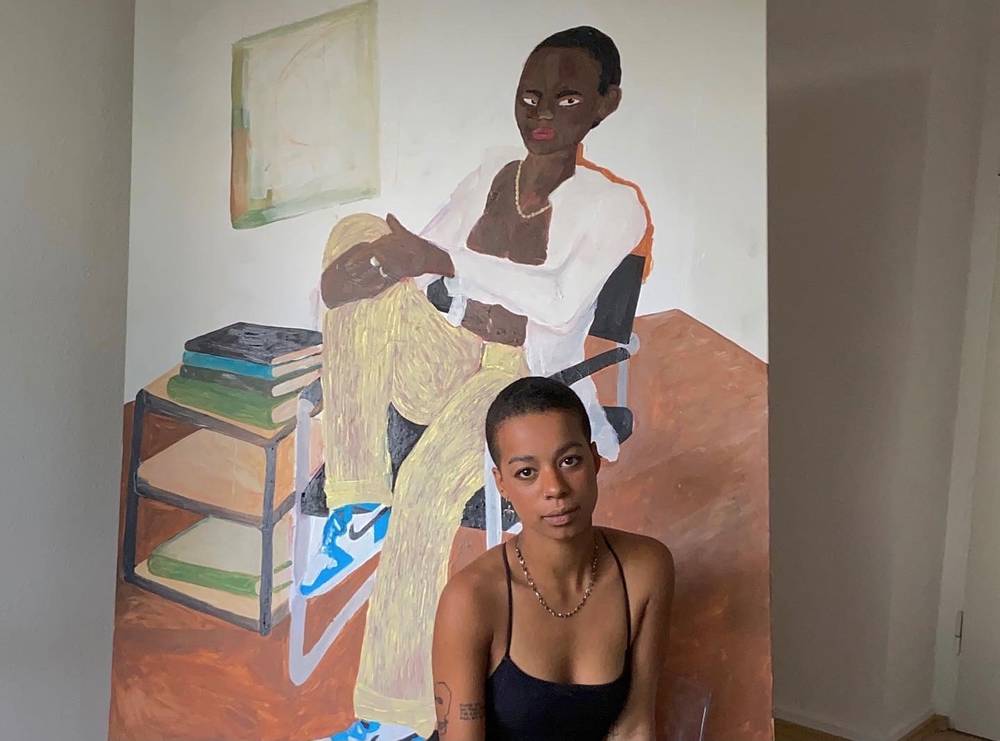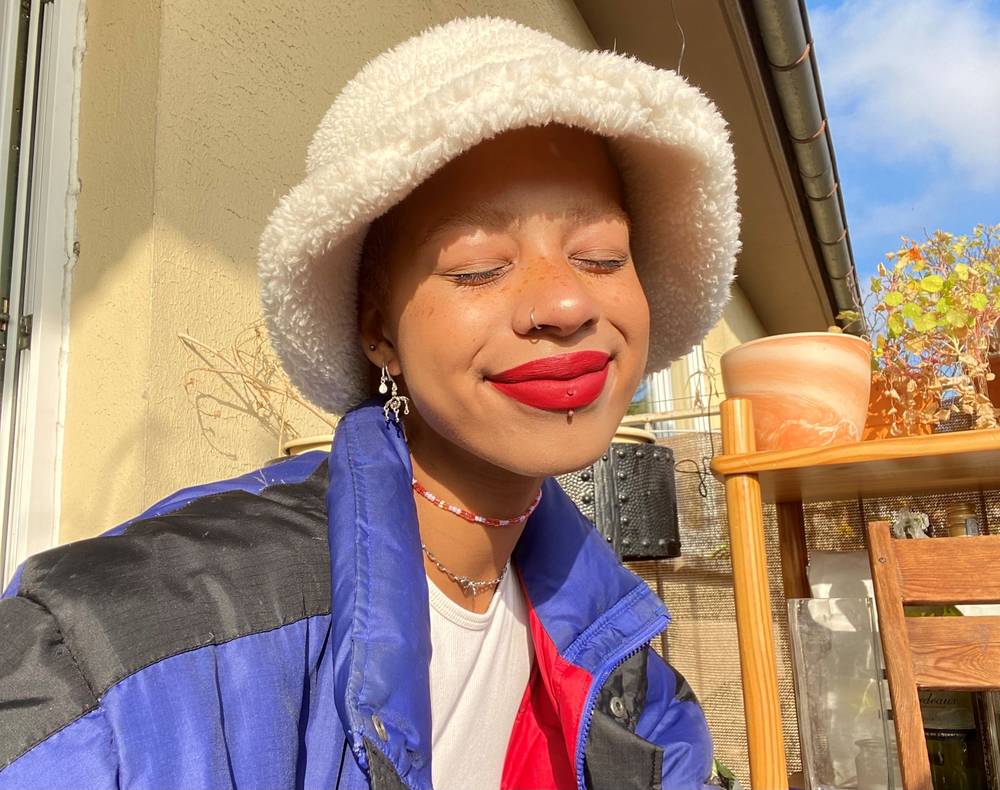ANY is an artist, her motifs Black people. In the interview she explains why her art also always tells her own story, what inspires her and how relates to the German art scene.
ANY, your works are very figurative. Whom or what do you aim to represent?
My themes are different faces of Black people, different moments in their lives and, at the same time, in my own. I also sometimes paint self-portraits so that I can “stay” in my artworks. There was a time when I often dealt with heartbreak, loss, and distance in my paintings. By distance, I mean that I selected as my subject material people like artists who lived in other countries or whom I could not see in concert.
It did me good to find a kind of closure for heartbreak and loss through my paintings – a nice closure I can hold onto, which depicts my feelings and is tangible. Painting people or selecting them as subjects, for me, means having a counterpart, a counterpart that I create from my own imagination. They are not ideal human beings; my figures are abstract and do not correspond to reality.
What themes do you address in your art and what stories do your paintings tell?
My paintings tell my own story: It is the story of a Black woman who wants to feel closer to people who inspire her – so she paints. She loves her brothers and sisters all over the world and finds it equally important to depict and capture them forever, like new momentary snapshots. Since the summer of 2020, I have primarily focused on depicting strong, peaceful, happy Black people. The murder of George Floyd and the trauma of the racism associated with it were and are incorporated into my paintings to this day. However, I don’t want observers to assume solely that I create art that is influenced by racism alone.

What challenges arise in dealing with racism through art?
Wherever our lived realities are depicted by others, it feels inauthentic. Defamed. Nobody portrays our suffering, or indeed our friends, our communities, our lives, and ourselves, better than us. I have found that painting a blank canvas with the faces of Black people is liberating for me. This way, I feel even more profoundly connected to the diversity of the lives Black people lead. I think I will always paint figures and bodies; it just feels right. My latest artwork is called “safer space for black joy”, and I believe it speaks for itself. Behind it lies the idea during “Black History Month” of drawing attention to the importance of places where Black communities can come together in safety and free of stigmatizing external labels, of exoticization or other stigmas. I also often pursue politicization with my art: I want my subjects to be taken seriously, for the people in the paintings to be seen and respected.
Which (Black) artists inspire your work?
I take inspiration not only from other painters, but also from songs by musicians. I often work with lyrics to give my subjects a meaning, a deeper context. French Montana, for example, inspired one of my paintings, which shows a man named TaAyo (Instagram: taaylito). The song and the person triggered so much in me that I wanted to bring to the canvas.
Aside from that, I am frequently inspired by different things: artists, photographs, images. I admire artists like Jean Michael Basquiat and Gabriel Sabino Bailey. I’m also influenced by Shaquille-Aaron-Keith and Torin Ashtun. Ashtun is a Black female artist who inspires me particularly in the way she presents herself and her art. She performs, and it is wonderful to follow her process. She films herself as she paints, depicts herself next to her paintings and thus, in my eyes, becomes part of the artwork. It has always been important to me to document the process of my creativity; I see it as part of the final outcome. Torin Ashtun shows me that everything relating to my finished painting is already art – every step, every movement, and every brushstroke, even the unfinished part of a painting. I am the art, or I can be it.

How do you view the German art and culture scene with regard to diversity and anti-racism? And where do you place yourself within it?
I’m barely part of the German art scene, since I perceive it as White. Are there any museums today that don’t contain stolen artworks? Are any museums paying reparations? Has any museum publicly acknowledged the historical mistakes and engaged with Black communities? The few steps I have taken within the German art scene were painful. Here’s an example: When curator Martin Engler exhibited Herold’s “Ziegeln****”, there was widespread protest. When I expressed my opinion on the incident publicly, I got a lot of messages from White people arguing for artistic freedom. I find this kind of intransigence reprehensible; I think it’s dangerous and extremely painful, because it shows me that I, as an artist who experiences racism, am worth less than “artistic freedom”.
Art does not have to hurt or to bring up trauma so that White people can have a claim to “artistic freedom”. I am grateful for the spaces that are being created within the White art scene. The fact that I am here, and that my voice is finding a place is thanks only to the networking of Black brothers and sisters. I think there is still a long way to go before we can talk about diversity in the art scene going beyond just individual exhibitions and moments. I locate myself where art and politics come together. I don’t want to be part of an academicized art culture, but rather to make art that is also accessible for marginalized people.









